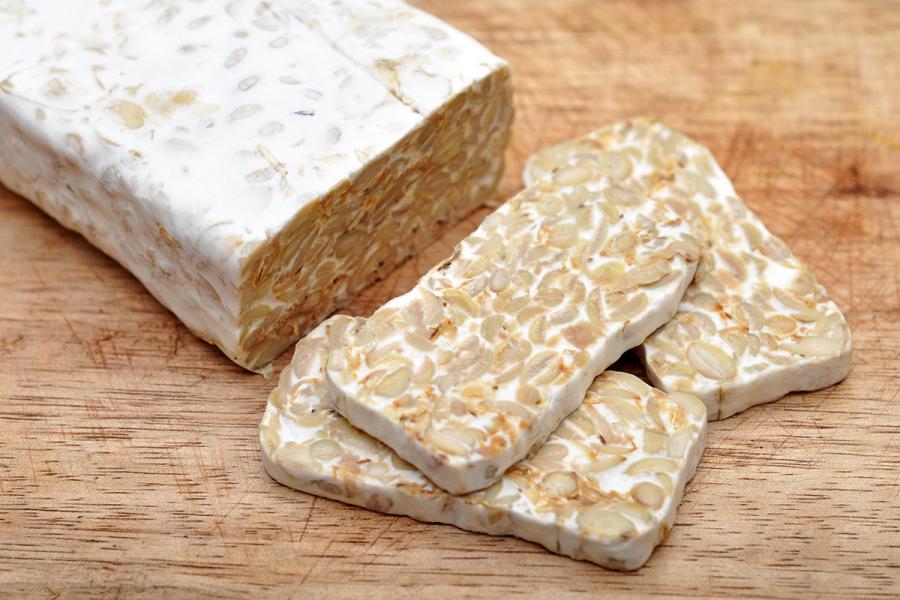Tempeh
Discover the nutty and protein-packed tempeh, a healthy fermented soybean cake.
Tempeh is a fermented soybean cake that originated from Indonesia. It is made by partially cooking and then fermenting soybeans with the help of a special mold called rhizopus oligosporus. The fermentation process binds the soybeans together into a dense cake-like form, which can be sliced or crumbled.
Tempeh is known for its nutty flavor, firm texture, and high protein content. It is often used as a meat substitute in vegetarian and vegan diets, and can be cooked in a variety of ways, such as frying, baking, grilling, or steaming. Tempeh can also be used as a filling for sandwiches, tacos, and wraps, or added to salads, stir-fries, and soups. In addition to its protein content, tempeh is a good source of dietary fiber, vitamins, and minerals, such as iron, calcium, and magnesium.
The protein packed soybean cake
Tempeh is believed to have originated on the island of Java in Indonesia, where it has been a popular food for centuries. The fermentation process used to make tempeh was likely discovered by accident, but it has since become an important part of Indonesian cuisine. Today, tempeh is enjoyed around the world and is especially popular among vegetarians and vegans as a protein-rich meat alternative.
Buying and storage
You can find tempeh in most health food stores and some grocery stores. Look for it in the refrigerated section, as it is a perishable item. When buying tempeh, choose a package that is firm and not too dry or slimy. Store it in the refrigerator and use it within a week of purchase.
Varieties
In addition to soybeans, tempeh can also be made from other types of beans, grains, and even vegetables. Some common varieties of tempeh include black bean tempeh, chickpea tempeh, and quinoa tempeh. These variations offer different flavors and textures, and can be used in a variety of recipes.
How to cook tempeh
Tempeh can be cooked in a variety of ways, including frying, baking, grilling, or steaming.
To prepare tempeh for cooking:
- Slice the tempeh into desired size and shape.
- Boil the tempeh for 10-15 minutes to remove any bitter taste.
- Marinate the tempeh for extra flavor, if desired.
- Cook the tempeh in your preferred method, until golden brown or crispy.
Tempeh can be used as a filling for sandwiches, tacos, and wraps, or added to salads, stir-fries, and soups. Its firm texture also makes it a great addition to vegetarian burgers or meatballs.
Substitutions
If a recipe needs tempeh and you don´t have it, you can susbstituye 1 lb tempeh with:
- Equal amount of firm tofu, well drained. It will be softer and bland in flavor.
- Equal amount of seitan. It is more bland and chewier texture.
- 1 lb vegetarian meat substitute.
- For crumble tempeh, use 1 cup of textured vegetable protein reconstitued in 2 cups vegetable stock. It will be less flavorful and not so chewy.
Nutritional Information
Tempeh is a good source of protein, fiber, and various vitamins and minerals, such as iron, calcium, and magnesium. A 100-gram serving of tempeh contains:
- Calories: 196
- Protein: 18.5 grams
- Fat: 11.4 grams
- Carbohydrates: 9.4 grams
- Fiber: 7.5 grams
Tempeh is also low in saturated fat and cholesterol, making it a healthy addition to a balanced diet.

